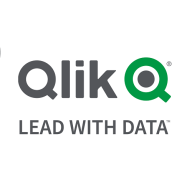

Qlik Replicate and Rivery are competing products in the data integration and migration category. Rivery has the upper hand due to its more diversified features and value for cost, making it appealing for those seeking advanced data transformation capabilities.
Features: Qlik Replicate focuses on real-time data integration, data replication, and change data capture, ensuring consistent data movement. Rivery offers a no-code development environment, automatic schema detection, and advanced data transformation features, providing robust data management flexibility. Rivery's versatility sets it apart.
Ease of Deployment and Customer Service: Qlik Replicate provides on-premises and cloud deployment with reliable performance and strong technical support. Rivery's cloud-native architecture enables quick setup and seamless integration with responsive customer service. Rivery's cloud focus supports faster deployment and ease of use.
Pricing and ROI: Qlik Replicate requires a substantial setup investment but offers significant ROI with comprehensive integration capabilities. Rivery has flexible pricing models aligned with consumption and usage, offering attractive ROI through cost-effective scalability, allowing businesses to start small and expand efficiently, potentially resulting in better long-term ROI.

Qlik Replicate is a data replication solution for replicating data from one source database to another for business intelligence software. It offers data manipulation and transformations, replication without impacting source databases, and ease of use without needing ETL. The solution is stable and user-friendly, with detailed logging and support.
Qlik Replicate has improved the organization by allowing each team to replicate their data into a single-source data location. The most important feature of Qlik Replicate is its ability to replicate and update records without needing a programmer.
Rivery is a serverless, SaaS DataOps platform that empowers companies of all sizes around the world to consolidate, orchestrate, and manage internal and external data sources with ease and efficiency.
By offering comprehensive data solutions and partnering with complementary technology providers, including Google, Snowflake, Tableau, and Looker, Rivery enables data-driven companies to build the perfect ecosystems for all their data processes.
We monitor all Data Integration reviews to prevent fraudulent reviews and keep review quality high. We do not post reviews by company employees or direct competitors. We validate each review for authenticity via cross-reference with LinkedIn, and personal follow-up with the reviewer when necessary.